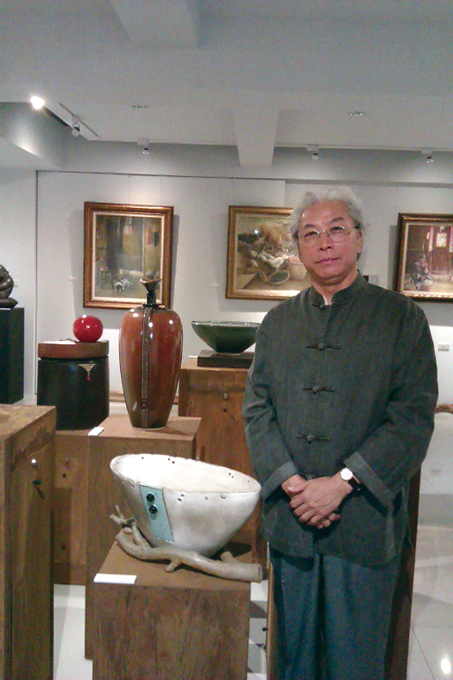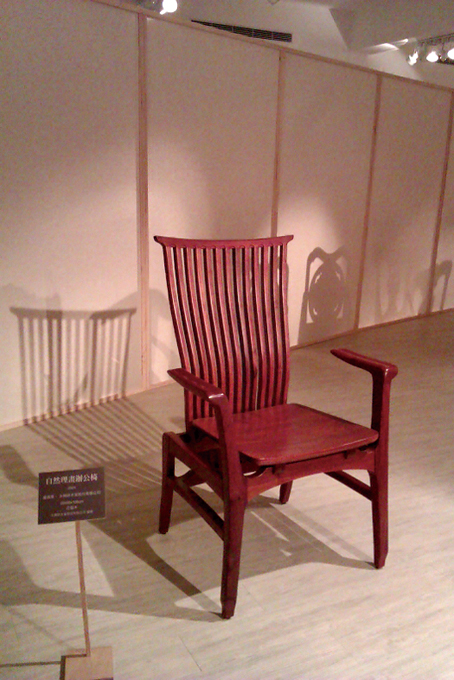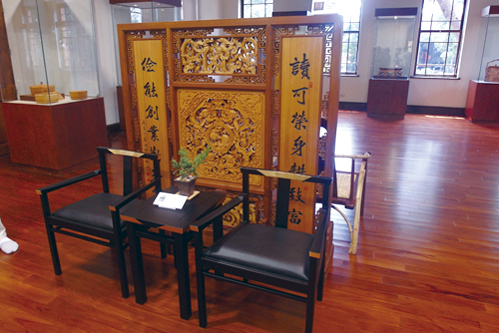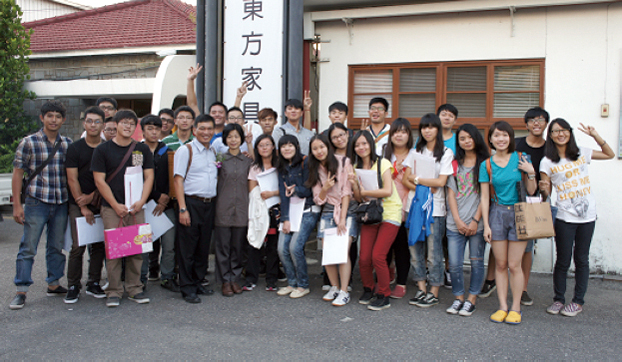Taiwan's Furniture Makers Seek Survival Through Alliances
Manufacturers strive to provide comprehensive solutions for home decoration
2013/12/17 | By Michelle Hsu
Some of the companies are now eying China and other emerging markets, but are not necessarily liking what they see. Pointed out Fred Chen, chairman of Fine Year Wood Works Co., “China's economy is now facing various problems such as weak consumption, high inventories, slim profits, and excessive supplies, and this has been putting a brake on China's economic growth. The furniture market there has been seriously affected as a result.”
Chen, who extended his furniture business to China more than two decades ago, made the comments in an article he contributed to the yearbook of the Taiwan Future Manufacturers Association (TFMA). In the article, he pointed out that “The furniture industry is now at a turning point where companies cannot help but slow down and think about new directions to follow.” He described the current situation as like being in a tunnel without seeing the light at the end.
Cross-sector Alliance
Chen noted that a trend of cross-sector alliances is emerging as a new operating model for an increasing number of furniture companies. “During the hard times,” he explained, “it would be much easier for single furniture companies to explore business opportunities with partners from other sectors than to struggle along by themselves.” He observed that several such alliances have been formed in China, among which one of the most noteworthy is the Champion Alliance of companies from the furniture, bathroom equipment, kitchen equipment, wood flooring, ceramics, bed and mattress, and lighting sectors. The alliance is aimed at providing consumers with comprehensive solutions for their new homes.
“For such alliances,” Chen pointed out, “a key to success is to have a good leader who can act as an effective integrator. Otherwise, it will be hard for the alliance to realize a synergetic effect.”
The cross-sector alliance trend is also brewing in Taiwan, though generally on a much smaller scales. A popular model is collaboration between a construction company and a group of furniture suppliers. For example, TFMA Chairman Ruca Chien has organized a team of furniture suppliers to sign contracts with the construction companies which are engaged in new community construction projects. Whenever a building is ready for people to move in, the team of furniture suppliers and the construction company jointly create a furniture showroom located inside the new community to introduce selected furniture items that best fit the lifestyles of the residents there.
Chien believes that this is a promising new sales channel for furniture companies. “As long as there are new buildings, there will be opportunities for furniture sales,” Chien commented. In his eyes, there will always be opportunities to sell furniture because most people have to purchase furniture at least twice during their lives—once when they marry, and again when they move into a new home.

This alliance model seems to have derived from the model used by furniture suppliers and interior designers. Wei Barng Wooden Industry Co., Ltd. is a forerunner in this, and has expanded its furniture business to cover furnishing accessories so as to provide customers with complete interior design solutions. In earlier years most of the furnishing accessories Wei Barng provided were imported from Italy and France; more recently it noticed the thriving creative/cultural industry in Taiwan, and began incorporating local art creations into its product lines. This summer it set up the Art Sui Gallery to introduce the works of local artists.
“In fact,” commented Walter Chiang, chairman of the OZZO Group, a Wei Barng affiliate, “furniture can be designed and produced as creative cultural items.” As member of the panel of judges for Taiwan's Young Designer Award, Chiang sees the rich talent of the island's young designers and that inspired him to create the Art Sui Gallery as a platform for the promotion of local art works.
Chiang believes that the best way for Taiwan's furniture industry to go in the future is to promote furniture-making craftsmanship and combine it with design talent, similar to the way that Denmark became Europe's “furniture kingdom.” In Chiang's eyes, craftsmanship doesn't necessarily mean hand-made; instead, it is a general term encompassing all the skills that add quality and value to furniture. Whether hand-made or machine-manufactured, craftsmanship is what adds both aesthetic and functional value.
Though Taiwan's domestic market is often regarded as too small to support large furniture companies, Chiang considers it best for local furniture designers to begin their business in the home market. “When your work is recognized in Taiwan,” he explained, “you will attract foreign buyers to come to you.”
Taiwan's furniture industry abandoned the “large-scale production” strategy long ago, adopting design and craftsmanship to add value to its products. What matters most to a furniture maker is not how big a market is, but how much value a company can add to its furniture. “Any highly recognized creative work will see endless sales opportunities in both the home and overseas markets,” Chiang believes.

After a decade or two of creative/cultural industry development, design in today's Taiwan is a work not simply of creating single products, but of generating a special feeling, ambiance, or lifestyle that appeals to particular groups of consumers, observed Lu Yuan-hua, chairman of the Taiwan Furniture Properties Association (TFPA).
“Designers should look at the big picture to see how their works will affect the overall feeling of the surroundings,” Lu explained. Sometimes, designers give their creations the function of story narrator—that is, they guide consumers into a special state where the ambiance fits their wishes. Through tactful design, each piece of furniture seems to narrate a story, giving consumers a spiritual feeling that transcends the materials of the objects.
Lu believes that the development of Taiwan's cultural/creative industry has broadened the scope of furniture design: “While emphasizing the integration of craftsmanship, technical skill, and design aesthetics, furniture design plays an increasingly important role in helping consumers determine their lifestyle.”

Huang Chun-chieh, woodcraft instructor at the Yung Shing Craft School, has noticed a new trend in Taiwan's wooden furniture. Noting that the island's wood furniture industry began developing in the Ming and Qing dynasties, and enjoyed a heyday from 1970 to 1990, he said that it has since slipped into a steady decline.
Apart from rising wages leading to the industry's offshoring, Huang pointed out, the most important factor in its decline is a popular disregard for technical education and a growing social tendency toward the values of ease and speed. This means that most young people are unwilling to invest in learning time-consuming craftsmanship.
Huang is also reassured, however, by the rise of manual production around the world in recent years, and the consequent reawakening of local culture; for instance, Taiwanese folk-craft workshops, established and taught by individuals, are springing up all around the island.
In the eyes of William Jiang, chairman of the Yung Shing Furniture Group, the development of woodworking in Taiwan is closely related to the economic environment. “Looking at today's carpentry-learning environment,” he commented, “it seems we've left behind the era of woodworking as a means of making a living, and now many people are learning carpentry as a hobby.” They use their leisure time to make personal contact with natural materials; and this contact, together with the aroma of wood, helps them relax and find relief from daily work pressures.




